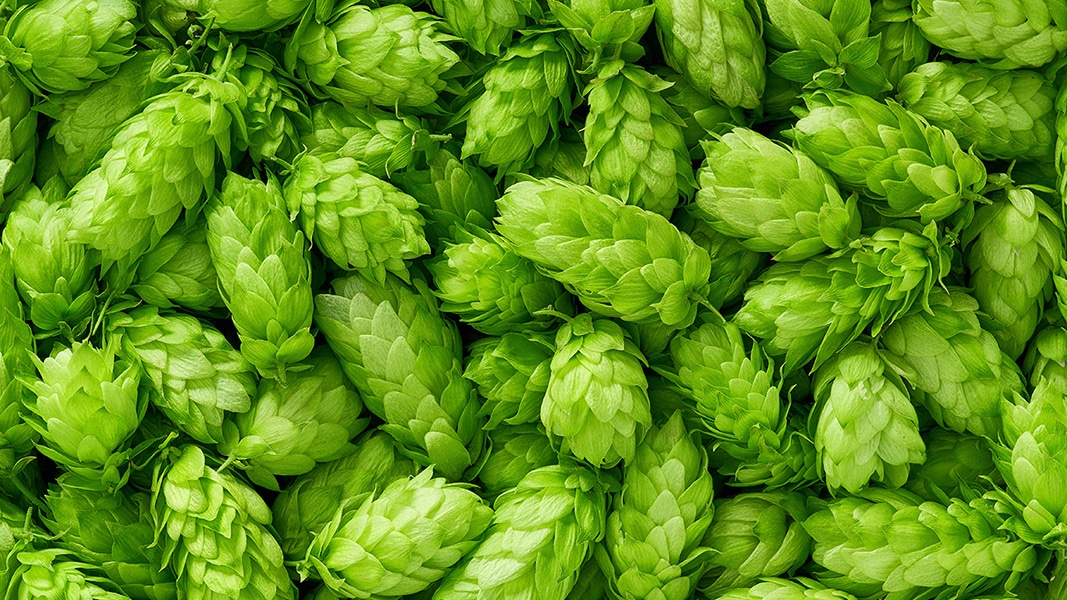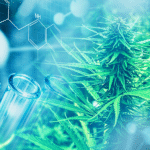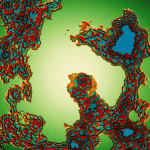Once upon a time, cannabis and humulus (hops) were the same plant. About 27 million years ago, cannabis and hops diverged from their common ancestor and evolved as separate botanical species.
Today, cannabis and humulus are identified as distinct species within the same plant family Cannabaceae. One can see a family resemblance in the jagged-edged leaves emblematic of both plants.
Family ties are also evident in the fact that cannabis seeds and pollen look the same as humulus seeds and pollen. These similarities make it difficult to distinguish between the fossilized remnants of both plants.
So how did scientists figure out when cannabis became cannabis, a unique species of its own?
Niche Theory
Dr. John McPartland addressed this question when he spoke at the 2016 meeting of the International Cannabinoid Research Society in Poland. He used “niche theory” to ascertain whether a carbon-dated pollen sample was indicative of cannabis or its humulus cousin.
Niche theory involves identifying a plant remnant based on other botanicals found in proximity. Cannabis prefers uplifted, flood-disturbed, alluvial soil and appears in a pollen assemblage dominated by high grassland flora, cereal grains, Artemisia, and flowering plants of the Goosefoot family. When remnants of these plants are present, cannabis rather than hops is likely among them.
Humulus, by comparison, colonizes a wetter ecological niche, flourishing in the vicinity of poplars and willows, for example. When remnants of these plants are found with cannabis/humulus seed or pollen, hops is the likely suspect.
Based on chloroplast DNA sequences and radiocarbon dating, McPartland suggests that cannabis emerged as a distinct botanical species 27.8 million years ago, and its area of origin was the Tibetan Plateau.
Therapeutic Attributes
As well as their shared physical characteristics (leaf, seed, pollen), cannabis and hops are similar in other ways. Some of the same components, including terpenes and other phytonutrients, are found in the female inflorescences of both species.
Cannabis has a rich history as a medicine going back to prehistoric times, and so does hops. Long before they became a bittering agent in the brewing industry, hop flower tops were used in traditional Eurasian cultures to treat restlessness and sleep disturbances. Ditto for cannabis flower tops.
In addition to their calming, sleep-inducing qualities, hops and cannabis share other significant therapeutic attributes. Both herbs have potent antibacterial and anti-cancer properties, according to recent scientific research.
Xanthohumol is one of several phenolic compounds in hops that have noteworthy medical potential. This “prenylated flavonoid” was shown to be a “’broad-spectrum’ cancer chemopreventive agent” in a 2004 preclinical study at Oregon State University, which recommended further investigation into its “potential for application in cancer prevention programs.” Subsequent research in Belgium found that xanthohumol “effectively inhibits proliferation of prostate cancer.”
Chinese scientists reported that xanthohumol is effective against HIV infection and suggested that it might serve as “an interesting lead compound” for developing “a novel therapeutic agent” for HIV.
Another flavonoid, 8-prenylnaringenin, found in hop flowertops is a potent phytoestrogen that could be useful as a dietary supplement for treating post-menopausal hot flashes. This flavonoid compound also has anti-diabetic potential, according to a 2018 report by German and Italian scientists.
Beer & Bud
What goes around, comes around. Eons ago cannabis and hops were the same plant, and now they are being reunited by several West Coast beer-makers who are spiking their brew with THC or CBD or other cannabis components.
In the summer of 2017, Lagunitas, the craft beer exemplar, partnered with CannaCraft, a California-based cannabis oil producer, and introduced a limited edition of “Supercritical,” an ale brewed with terpenes (but no THC or CBD) extracted from two popular cannabis varietals, Girl Scout Cookie and Blue Dream.
For an encore, CannaCraft is producing a couple of different THC-infused vape oil blends combined with terpenes extracted from hops. The dominant terpenes in “Stereoterpical” and “Hop Cannon” – the newest psychoactive additions to the AbsoluteXtracts vape cartridge product line – are also present in various cannabis cultivars.
The terpene profiles of these THC-fortified hop oil blends include memory-enhancing pinene with its woody aroma; anxiety-reducing limonene with its citrus flavor; relaxing linalool with lavender notes; humulene, an appetite-suppressing sedative; and anti-inflammatory beta-caryophyllene, a bitter, all-star phytonutrient.
So smell the mystery, and sleep well. If you can’t smoke your beer, you might try vaping it.
Martin A. Lee is the director of Project CBD. He’s authored and edited several books, including Smoke Signals, Acid Dreams, and The Essential Guide to CBD. © Copyright, Project CBD. May not be reprinted without permission.
References
- Delmulle L, Bellahcène A, Dhooge W, Comhaire F, Roelens F, et al. Anti-proliferative properties of prenylated flavonoids from hops (Humulus lupulus L) in human prostate cancer cell lines. Phytomedicine. 2006 Nov;13(9-10):732-4. PubMed PMID: 16678392.
- Magalhães PJ, Carvalho DO, Cruz JM, Guido LF, Barros AA. Fundamentals and health benefits of xanthohumol, a natural product derived from hops and beer. Nat Prod Commun. 2009 May;4(5):591-610. PubMed PMID: 19445313.
- Seliger JM, Misuri L, Maser E, Hintzpeter J. The hop-derived compounds xanthohumol, isoxanthohumol and 8-prenylnaringenin are tight-binding inhibitors of human aldo-keto reductases 1B1 and 1B10. J Enzyme Inhib Med Chem. 2018 Dec;33(1):607-614. PubMed PMID: 29532688.
- Stevens JF, Page JE. Xanthohumol and related prenylflavonoids from hops and beer: to your good health!. Phytochemistry. 2004 May;65(10):1317-30. PubMed PMID: 15231405.
- Wang Q, Ding ZH, Liu JK, Zheng YT. Xanthohumol, a novel anti-HIV-1 agent purified from Hops Humulus lupulus. Antiviral Res. 2004 Dec;64(3):189-94. PubMed PMID: 15550272.
- Yuan Y, Qiu X, Nikolić D, Chen SN, Huang K, et al. Inhibition of human cytochrome P450 enzymes by hops (Humulus lupulus) and hop prenylphenols. Eur J Pharm Sci. 2014 Mar 12;53:55-61. PubMed PMID: 24342125; NIHMSID: NIHMS549835; PubMed Central PMCID: PMC3987852.
- Zanoli P, Zavatti M. Pharmacognostic and pharmacological profile of Humulus lupulus L. J Ethnopharmacol. 2008 Mar 28;116(3):383-96. PubMed PMID: 18308492.







